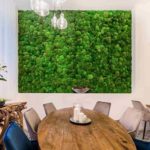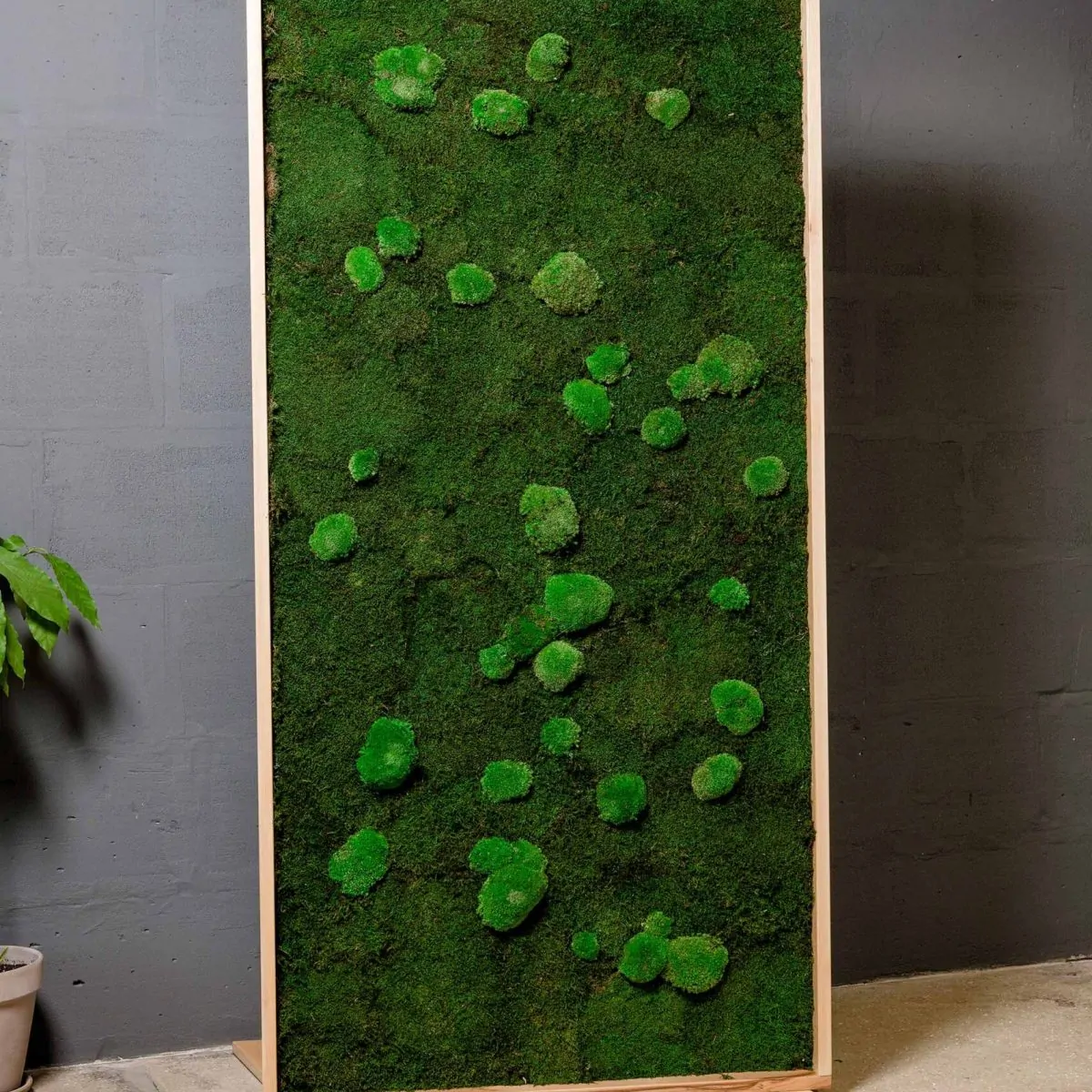If one of the aims of interpretation as described above is to help visitors understand something of the spiritual meaning of the place, then all the earnest facts and explanation may not achieve this. However, there are ways in which it might be conveyed through poetry, prose and painting about the area, and the use of these elements in the displays. Another way is to use sculpture out in the landscape. If visitors come across sculpture along a trail it can evoke all sorts of questions and responses, and can often prompt an understanding of the spirit of a place. The use of sculpture in forests has been pioneered by the Forestry Commission in Britain for over 20 years.
At Grizedale Forest in Cumbria a partnership project was undertaken between the forest managers and Northern Arts, a government-funded arts promotion body. Together they were able to fund a series of residencies over the years for talented sculptors, who were able to explore the landscape through art and the use of local materials. Some of the sculptures are highly abstract evocations of the land, of water, of growth and decay, while others are more figurative. The use of sculpture in this way has been taken up elsewhere in Britain with some interesting results.
However, there is a danger of overloading the landscape with sculpture, and it is
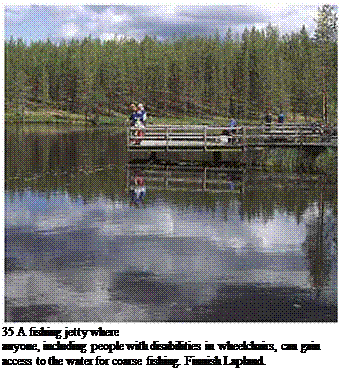 |
important to view the sculpture as a means to an end and not as an end in itself. Ideally, the sculpture should emerge from and be part of the landscape to which it ultimately returns, thus demonstrating something of the cycle of creation, change and decay. In this scheme the landscape is not a setting for a studio piece.
36
 |
A hide with a hidden approach path using screens made from hazel wattle fencing.
Unfortunately, the hide is reached by a staircase, which prevents access by people with disabilities.
37
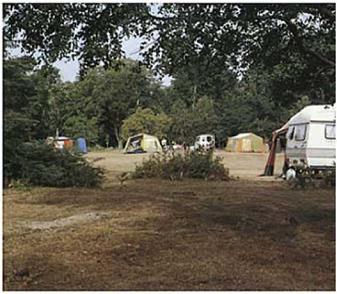 |
An example of an open camping/trailer caravan area where the backdrop of trees and some patches of shrubs give some structure and enclosure to the site. New Forest, Hampshire, England.
38
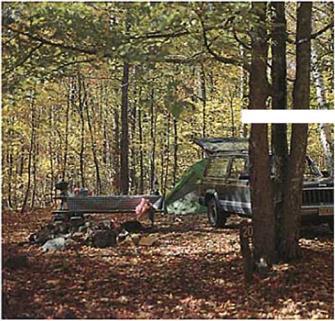 |
An ideal woodland tent camping area provided with a parking place, flat tent base, picnic table and fireplace. The trees screen sites from one another, giving privacy and security. Baxter State Park, Maine, USA.
39
 |
A camping shelter, known in the USA as the ‘Adirondack Shelter’. The fire in front of the open shelter gives warmth. Baxter State Park, Maine USA.
40
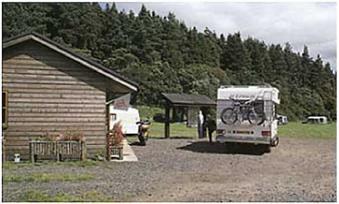 |
The entrance and arrival area to a campsite in an open setting. The reception building also
contains a small shop. An information sign shows the site layout and details of the surrounding area. The general appearance is tidy, simple and well maintained, although there is a rather large expanse of gravel, which need not be so great.
41
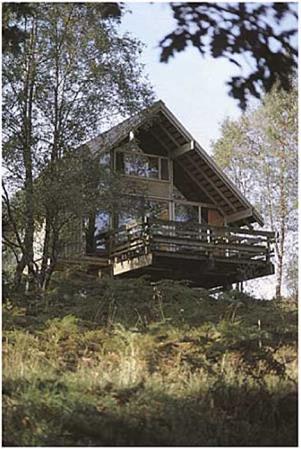 |
An attractive A-frame construction with
large windows and a deck to give good light and a view over a lake. This example is supported on stilts to take advantage of a slope. Loch Aweside, Argyll, Scotland.
42
 |
These brochures are a standard series, designed to a family ‘style’ and given to every visitor at the entrance to US National Parks. They are well designed and produced, and make an excellent collection.
43
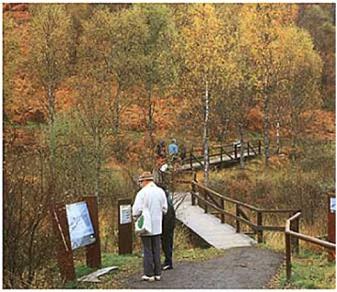 |
A concentration of interpretative panels makes this almost an outdoor exhibition area. Two types of structure are used: the larger one is described in Chapter 4, and the smaller is the slab of wood described above. The panels are arranged at the entrance to a series of trails. Queen Elizabeth Forest Park, Scotland.
44
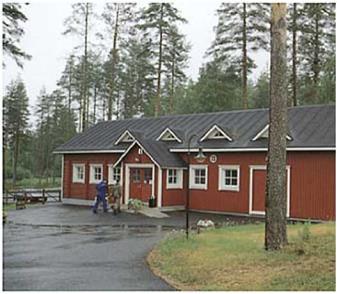 |
This building, modelled closely on traditional vernacular architecture, houses an information and exhibition centre. It is not pretentious, and is well built with no fuss in its setting or surroundings. Ruunaa National Hiking Area, Finland.

45
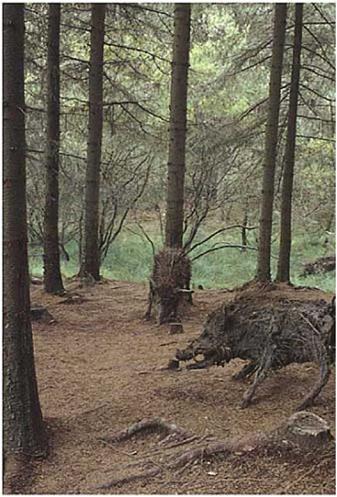 |
This intriguing scene includes two sculptures of wild boar made from resin-bonded natural materials. It is evocative in its own right, yet subtly interprets part of the landscape. In Britain wild boar do not exist in the
wild any more, yet here at Grizedale Forest they are symbolic. The name Grizedale is derived from Old Norse for The Valley of the Pigs’.

